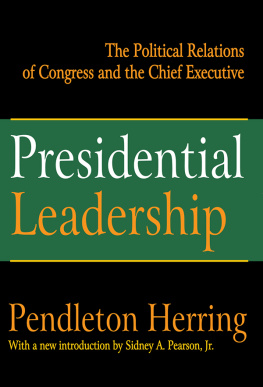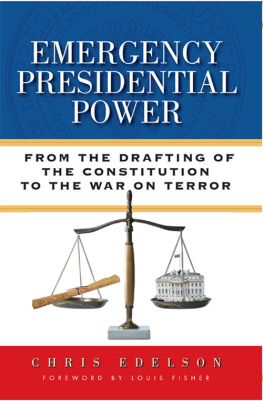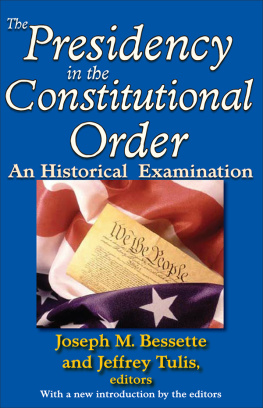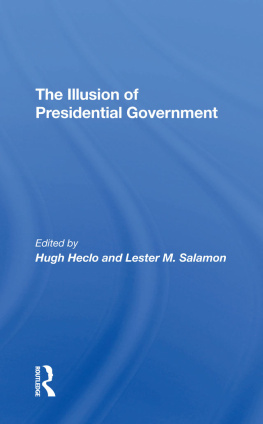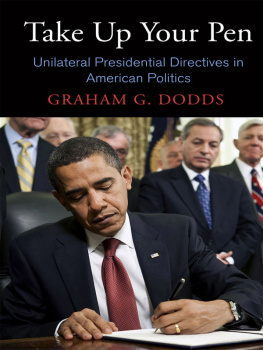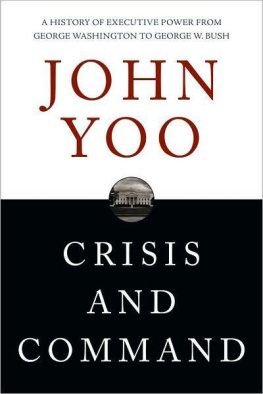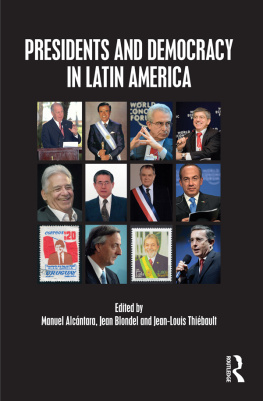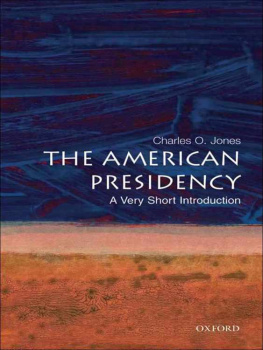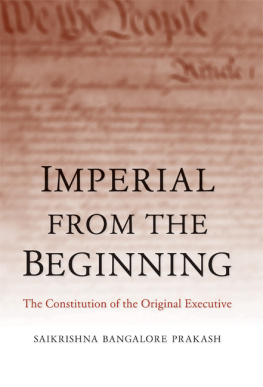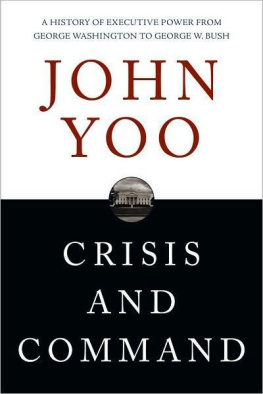Presidential
Leadership
Library of Liberal Thought
sthetic
Benedetto Croce
with a new introduction by John McCormick
The Case for Modern Liberalism
Charles Frankel
with a new introduction by Thelma Z. Lavine
Changing Disciplines
John A. Ryle
Congressional Government
Woodrow Wilson
with a new introduction by William F. Connelly, Jr.
Constitutional Government in the United States
Woodrow Wilson
with a new introduction by Sidney A. Pearson, Jr.
The Correspondence of John Stuart Mill and Auguste Comte
Oscar A. Haac, editor
New Deal Days: 1933-1934
Eli Ginzberg
The New Democracy
Walter E.Weyl
with a new introduction by Sidney A. Pearson, Jr.
Party Government
E. E. Schattschneider
with a new introduction by Sidney A. Pearson, Jr.
Peace and War
Robert A. Rubinstein and Mary LeCron Foster, editors
Politics and Administration
Frank J. Goodnow
with a new introduction by John A. Rohr
Politics and Religious Consciousness in America
George Armstrong Kelly
Presidential Leadership
Pendleton Herring
with a new introduction by Sidney A. Pearson, Jr.
Quest for Equality in Freedom
Francis M. Wilhoit
Tocqueville and American Civilization
Max Lerner
Toward a New Enlightenment
Paul Kurtz
The Transatlantic PersuasionRobert Kelley
The Political Relations
of Congress and the Chief Executive
Presidential
Leadership
Pendleton Herring
With a new introduction by Sidney A. Pearson, Jr.
Originally published in 1940 by Rinehart & Company, Inc.
Published 2006 by Transaction Publishers
Published 2017 by Routledge
2 Park Square, Milton Park, Abingdon, Oxon OX14 4RN
711 Third Avenue, New York, NY 10017, USA
Routledge is an imprint of the Taylor & Francis Group, an informa business
New material this edition copyright 2006 by Taylor & Francis.
All rights reserved. No part of this book may be reprinted or reproduced or utilised in any form or by any electronic, mechanical, or other means, now known or hereafter invented, including photocopying and recording, or in any information storage or retrieval system, without permission in writing from the publishers.
Notice:
Product or corporate names may be trademarks or registered trademarks, and are used only for identification and explanation without intent to infringe.
Library of Congress Catalog Number: 2005053819
Library of Congress Cataloging-in-Publication Data
Herring, Pendleton, 1903-
Presidential leadership : the political relations of Congress and the chief executive / Pendleton Herring; with a new introduction by Sidney A. Pearson.
p. cm.(Library of liberal thought)
Originally published: New York : Rinehart & Co., 1940.
Includes bibliographical references and index.
ISBN 1-4128-0556-2 (pbk. : alk. paper)
1. Executive powerUnited States. 2. United StatesPolitics and government. 3. United States. CongressPowers and duties. I. Title. II. Series.
JK516.H4 2006
352.2360973dc22
2005053819
ISBN 13: 978-1-4128-0556-8 (pbk)
To my aunts
ANNETTE SHERWOOD and PEARL HERRING
In appreciation of their unfailing welcome in Washington
And so it was, that as
oft as he passed by, he
turned in thither to eat
bread.II Kings 4:8.
Contents
Transaction Introduction: The Founders
Presidency Meets the Modern World
Appendices:
Transaction Introduction
The Founders Presidency Meets the Modern World
ON THE FACE of it, Pendleton Herrings defense of the modern presidency in Presidential Leadership (1940) seems to trace its philosophical lineage back to the founding debates over the nature of the presidency. Alexander Hamilton in The Federalist described energy in the office of the president as the very heart of good government: A feeble executive implies a feeble execution of the government. A feeble execution is but another phrase for a bad execution: and a government ill executed, whatever it may be in theory, must be, in practice, a bad government (Fed. 70). It is perhaps the most oft-quoted passage ever penned on the presidency. But more importantly, it reflects one of the core ideas of Hamiltons contribution to the founders new science of politics: that the modern science of popular government, while not synonymous with executive power, was certainly compatible with it. Indeed, in Hamiltons formulation, presidential leadership was to be the engine of the new government. It was and remains one of the central ideas in the American science of politics, but it is problematic in every respect.
On the one hand, arguments supporting strong presidential leadership based on constitutional design confront the obvious dilemma that the Constitution does not appear to have been assembled to facilitate executive leadership: The founders spoke of limited government with enumerated powers and not of presidential leadership. For the founders of all particular persuasions, presidential leadership was understood to be leadership within a written constitution. On the other hand, we are also familiar with the Anti-Federalist argument that the presidency represented monarchial tendencies and was therefore the enemy of republican government. This side of the founding debates has never entirely lost its appeal, a point Hamilton acknowledged both at the Constitutional Convention and in The Federalist. The Anti-Federalist doubted that the Constitution would be adequate to contain executive leadership, especially in times of crisis. Herrings approach to understanding the problems and irony of presidential leadership in the American constitutional system should be read as one of the significant attempts to resolve the apparent tensions in the founders conception of the office. The merits of his contribution will turn on whether or not his approach helps to deepen our understanding of this evident tension.
Hamiltons famous dictum on the presidency has always therefore presented a dilemma for students of American politics, a dilemma that lay at the heart of Herrings work. Most students of the presidency acknowledge that the overall constitutional design is not obviously intended to promote presidential leadership, however much Hamilton thought it essential for effective republican government and however much Herring sought to reassure his readers that an energetic president was safe for democracy. Advocates of the president as the engine of American government have had to contend with Madisons observation, also in The Federalist: In republican government, the legislative authority necessarily predominates (Fed. 51). Madisons point, while it certainly does not contradict Hamiltons dictum, reminds us that the president, strong or weak, must expect to meet with powerful opposition from the legislature that is built into the constitutional design. The full implications of presidential leadership, especially in crisis times, will always depend at least as much on time, place, and circumstance as constitutional design. After the ratification of the Constitution, an energetic president versus legislative dominance quickly became the heart of the philosophical quarrel that developed between Hamilton on the one side and Madison and Jefferson on the other side during the 1790s.

